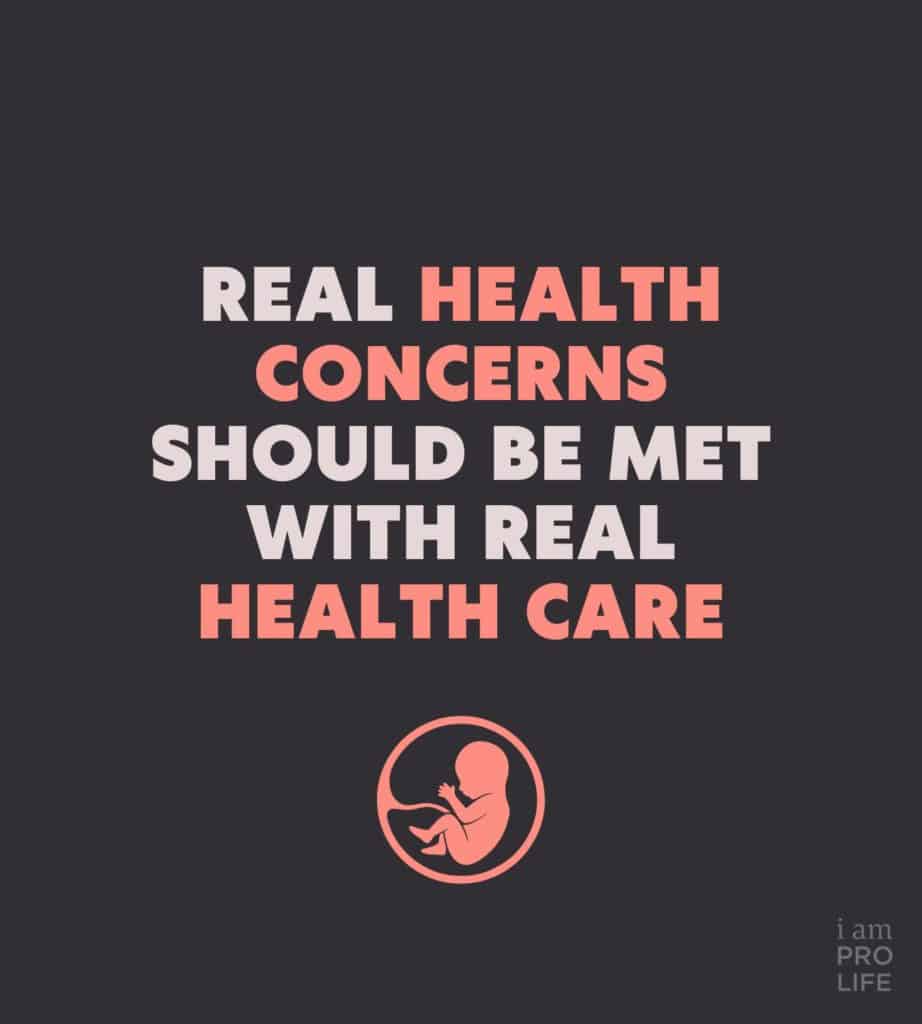The argument that abortion is safer than giving birth predates Roe v. Wade. In fact, Sarah Weddington, Jane Roe’s attorney, made this plea in the original Roe v. Wade hearing. Today, pro-abortionists present the abortion argument alongside maternal mortality rates. But when we break down the stats and facts, this statement is neither in context nor discussed in a way that’s beneficial to at-risk women.
Maternal Mortality Rates and Abortion
Imagine if we sat down to discuss abortion safety, and I said, “I’m not saying every abortion clinic is out to harm women. What I am saying is no one has ever seen an abortion clinic and Batman in the same room together.”
You’re probably familiar with the “I’m not saying I’m Batman” joke. Likewise, you’ve probably heard a pro-lifer claim that abortion hurts women (which it certainly can). Even though I can knit Batman and abortion clinics into an argument you understand, neither statement provides clarity nor justification when set alongside the other. Comparing the safety of abortion to that of someone giving birth is much like my Batman-abortion clinic claim.
If we’re genuinely concerned about women’s health, we need to discuss these concerns — mortality rates and abortion safety — separately and in the context of when and why they occur.
What is Maternal Mortality?
A more straightforward definition of maternal mortality is pregnancy-related death. As of 2022, the CDC estimates that “Each year in the United States, about 700 people die during pregnancy.” Furthermore, an additional 50,000 people experience serious health consequences after giving birth. Death may result from blood loss (hemorrhaging) or heart-related conditions during delivery. However, maternal mortality is most commonly due to infection (at birth or shortly after).
The vast majority of abortions occur during the first 13 weeks of pregnancy and for reasons unrelated to the physical health of the mother. Comparing abortion safety to the safety of birthing a child is like comparing the risks of a heart transplant to chemotherapy. Patients at-risk for each scenario do not benefit from the other’s situation.They are different challenges, each with their own risks and reasons for taking those risks.
Statistically, it is doubtful that a woman facing an abortion decision will wait until the time of birth to make that decision. Likewise, protocols for saving a woman’s life during labor do not include abortion. Take, for example, the preventative steps for preventing maternal mortality, as offered by the CDC:
Preventing Maternal Mortality
The CDC gives helpful suggestions for preventing maternal mortalities:
“During Pregnancy: Improve access to and delivery of quality prenatal care, which includes managing chronic conditions and educating about warning signs.
At Delivery: Standardize patient care, including delivering high-risk women at hospitals with specialized providers and equipment.
Postpartum: Provide high-quality care for mothers up to one year after birth, which includes communicating with patients about warning signs and connecting to prompt follow-up care.”
You’ll notice that nowhere in this list is abortion mentioned. Even if abortion sported enough reliable evidence to prove it was safer than giving birth, it wouldn’t matter. At best, abortion is an archaic and uninformed suggestion for treating the health challenges of modern women.
Is Abortion Safer Than Giving Birth?
Most abortions occur within the first 13 weeks of pregnancy. Researchers estimate that more than half of today’s abortions occur via the abortion pill.
You may have heard the claim that the abortion pill is as safe as taking Tylenol. This statement is grossly misinformed and stems from poor and non-mandatory reporting. Moreover, the most recent Medicaid data shows that more than 60 percent of abortion pill-related emergency room visits are miscoded as miscarriages. This means that the majority of occurrences of the abortion pill being life-threatening are never properly linked back to the pill.

Some sources claim that abortion providers still provide reporting on the pill despite these poor standards (claps and snaps for them). But let’s put this into perspective too. Abortion providers, charge hundreds of dollars per abortion pill regimen. Currently, they’re given a choice of whether or not to report the harmful side effects of their product.
Again, I’m not saying abortion providers are Batman. But if they have a cape, can rappel down tall buildings and own a Batcave, we’re allowed to be suspicious.















